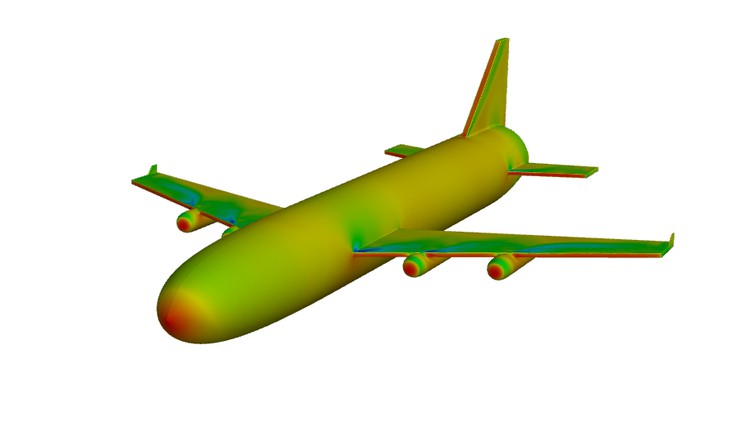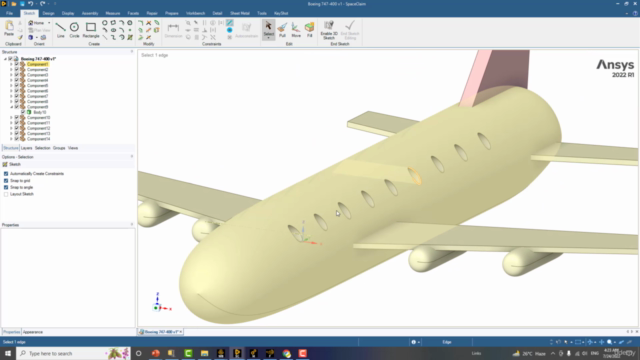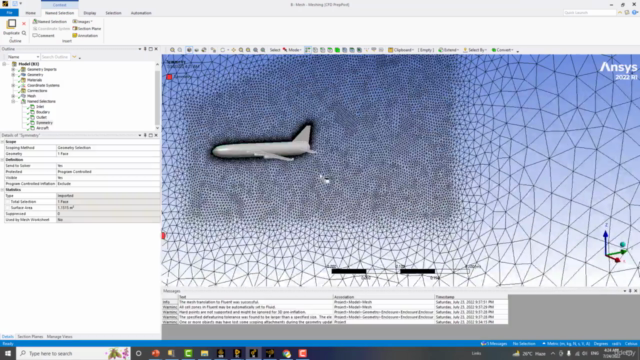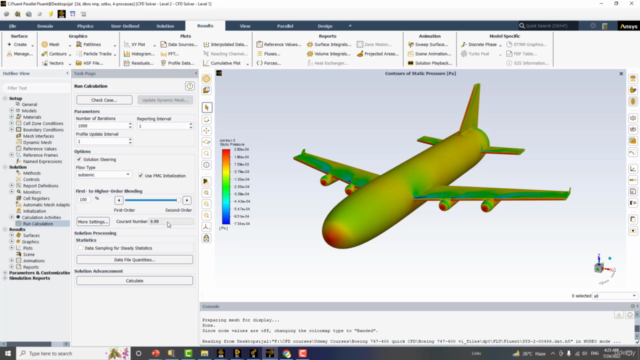Absolute Beginners Guide to CFD simulation in ANSYS

Why take this course?
🌪️ Absolute Beginners Guide to CFD Simulation in ANSYS 🚀
Welcome to your journey into the world of Computational Fluid Dynamics (CFD) with our comprehensive online course, tailored for absolute beginners. No prior knowledge of simulation is required! By the end of this course, you will confidently perform a CFD simulation from scratch using ANSYS Workbench, focusing on a simplified model of the Boeing 747-400 aircraft.
Course Highlights:
-
Geometry Preparation:
- Learn to use ANSYS Spaceclaim for geometry cleanup and creation of the domain for a full Aircraft (Boeing 747-400).
- Create a body that will serve as the Body of Influence (BOI) for mesh refinement in critical areas such as the wake region.
-
Mesh Generation:
- Master hybrid mesh creation in Workbench Grid Generation, including prism layers to capture the boundary layer flow features essential for accurate aerodynamic flows.
- Refine meshing in the wake area using the BOI technique to ensure high-fidelity simulations.
-
Setting Up Your Simulation:
- Gain expertise in setting up a compressible flow simulation within ANSYS Fluent, including:
- Providing proper scaling factors.
- Choosing appropriate turbulence models and enabling the energy equation.
- Defining ideal gas properties and setting up boundary conditions, particularly at the inlet using Mach number.
- Establishing reference conditions for area, length, and other critical parameters.
- Creating report definitions to monitor drag and lift coefficients during the simulation.
- Learn to initialize your solution using a hybrid method and set up the solver with "solution steering" options to accelerate convergence in Fluent.
- Gain expertise in setting up a compressible flow simulation within ANSYS Fluent, including:
-
Solving and Analyzing:
- Experience the thrill of hitting the 'calculate' button to solve your CFD simulation using iterative solver schemes within ANSYS Fluent.
- Understand how to interpret post-processing data such as Cp plots, vector plots, and contour plots for pressure and Mach number.
- Draw path lines to visualize flow interaction with the aircraft body.
- Calculate drag and lift coefficients to analyze the performance of your design.
-
Advanced Scenarios:
- Modify the aircraft geometry to include an angle of attack (AoA) of 8 degrees and quickly update the mesh from a zero AoA case.
- Run simulations with different angles of attack to compare results and understand the impact on aerodynamic performance.
By the end of this course, you will have a solid understanding of the entire CFD simulation process in ANSYS Workbench, from initial geometry setup to final analysis and interpretation. You'll be equipped with the skills needed to apply these techniques to other complex geometries and industries.
🛫 Enroll now and take your first step into the world of CFD with ANSYS! 🛫
Course Gallery




Loading charts...